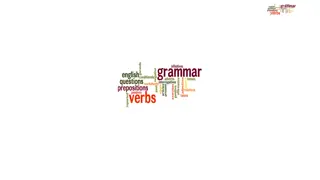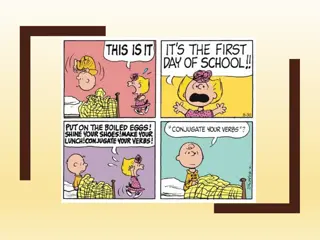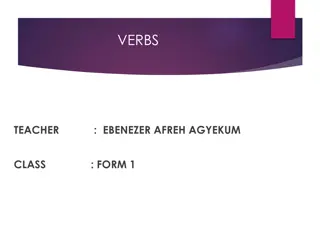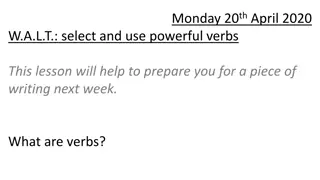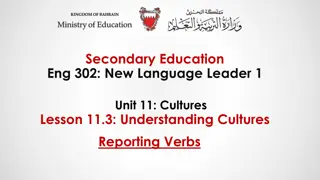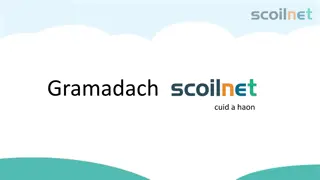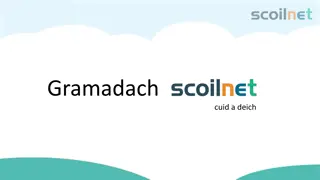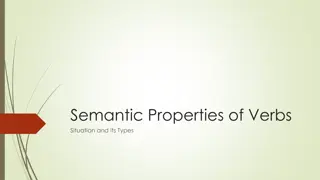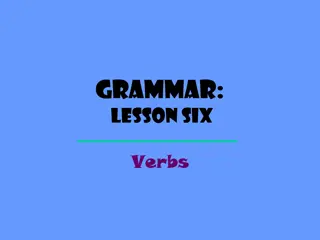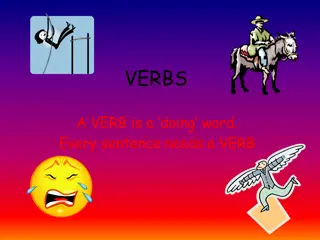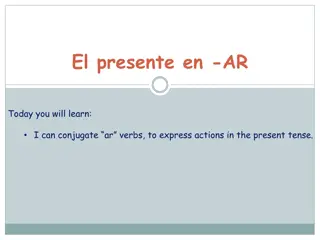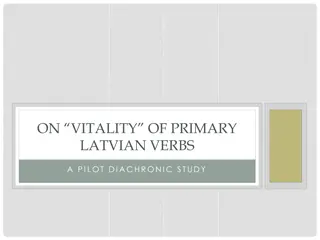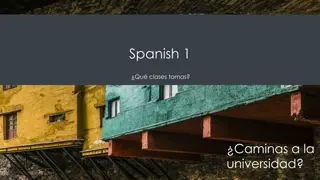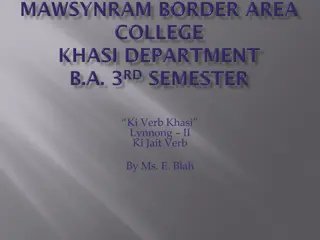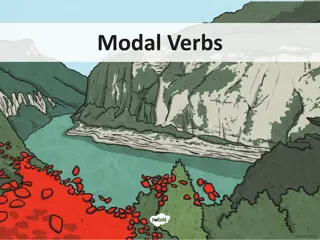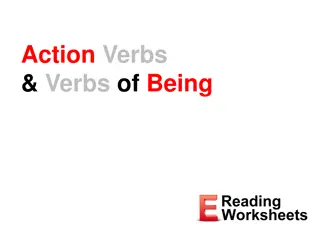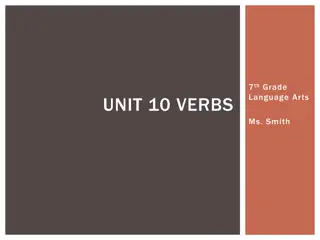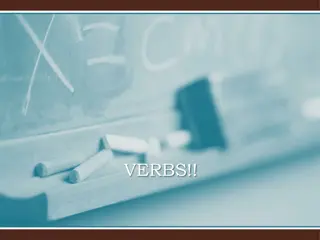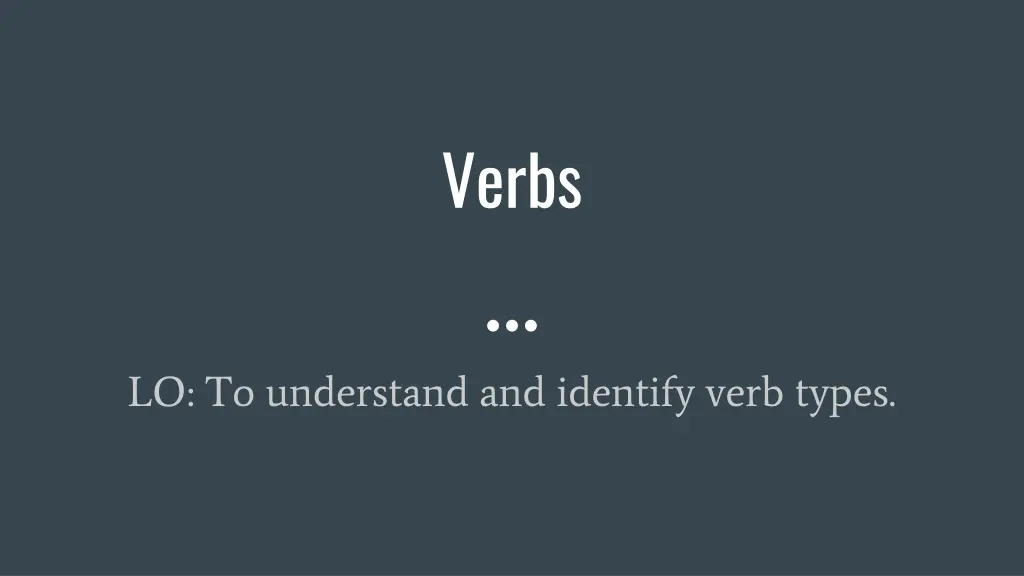
Understanding Verb Types in Language and Literature
Explore verb types through tasks and examples to enhance writing skills in A-Level Language and Literature. Identify dynamic and stative verbs, practice recognition, and apply learning to text analysis.
Download Presentation

Please find below an Image/Link to download the presentation.
The content on the website is provided AS IS for your information and personal use only. It may not be sold, licensed, or shared on other websites without obtaining consent from the author. If you encounter any issues during the download, it is possible that the publisher has removed the file from their server.
You are allowed to download the files provided on this website for personal or commercial use, subject to the condition that they are used lawfully. All files are the property of their respective owners.
The content on the website is provided AS IS for your information and personal use only. It may not be sold, licensed, or shared on other websites without obtaining consent from the author.
E N D
Presentation Transcript
Verbs LO: To understand and identify verb types.
Can you make sense of these?? ALL WORLD i NO WAYS IT WAYS our our our our our our our our our our our our our our our our our our our our our our our our
Answers It s a small world after all No two ways about it 24 ours Eye shadow
Why do we need to know? We need to know about verbs as they will help us write about texts using terminology. Writing word or sentence is not specific enough in A-Level Lang/Lit. So learning about these terms will help us write more sophisticated essays.
Verbs Verbs are doing words. They show an action, condition or experience. Task 1: Which words in the following list could be verbs? There are 4 in total. Mascara. Pull. Creepy. Drive. Fantastic. Wriggle. Jumper. Earphone. Room. Think. Necessary.
Some verbs show movement (dynamic verbs), some do not show movement (stative verbs). Task 2: - Highlight the verbs that show movement (dynamic verbs). - Highlight the verbs that do not show movement (stative verbs) in another colour. Punch Hate Respect Run Jump Is / Are Think Exist Laugh Pretend Shut Shudder Be Batter Eat
Some verbs show movement (dynamic verbs), some do not show movement (stative verbs). Task 3: - Highlight the verbs that show movement (dynamic verbs). - Highlight the verbs that do not show movement (stative verbs) in another colour. Punch Hate Respect Run Jump Is / Are Think Exist Laugh Pretend Shut Shudder Be Batter Eat
To remember what verbs are... Task 4: Choose four stative verbs (no movement) and four dynamic verbs (shows movement) and write them on a post-it note. Give this note to your partner. You will need to remember as many of these as you can at the end of the lesson. You will not be allowed to look at your post-it again so make sure you write down some memorable verbs!
Task 5: Look at the Bill Bryson extract again on your original page. Find examples of stative and dynamic verbs.
Task 5 Answers: There were 26 different verbs in total. Bite hope was stole see doing getting know met look breaks drink Forget Moved that's (is) left looking I'm (am) Stay stop tell play pull to meet beat afford
Final Task Do you remember the eight verbs I asked you to memorise? Say them to your partner now. Your partner can check how many you get right by using the post-it note you gave them earlier. To test yourself further, tell your partner which verbs were stative and which were dynamic.

